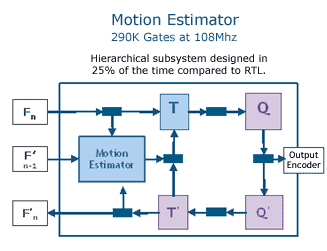RTL coding using languages like Verilog and VHDL have been around since the 1980’s and for almost as long a time we’ve been hearing about High Level Synthesis, or HLS that allows an SoC designer to code above the RTL level where you code at the algorithm level. The most popular HLS languages today are C, C++ and SystemC. Several EDA vendors have tools in this space, and one of them is Forte Design Systems, founded in 1998.
My question today is, “What applications implement best with HLS?”
Let’s take a look at three application categories that make sense to use an HLS approach.
Digital Media
I love to view or create digital media with my devices:
- 35mm Canon DSLR
- MacBook Pro laptop
- iPad tablet
- Google Nexus 7 tablet
- Samsung Galaxy Note II smart phone
- Amazon Kindle Paperwhite, e-book reader
Each new generation of graphics processing in a tablet is increasing throughput by about 4X, creating smoother experiences. With all of the increase in pixel counts and frame rates, designers must still meet more competitive battery life times which means controlling power throughout the design process.
Hardware acceleration of algorithms is the way to make your consumer devices stand out, instead of using software-based approaches on a general purpose CPU.
If you insist on coding at the RTL level it will simply take you much longer to explore, refine and implement a given algorithm. For example an IC designer coded a motion estimator block using C code in just 1/4th the time compared with using RTL code.
Digital media designers can code in C their algorithms directly:
Security
I’ve done some web programming where sensitive credit card data needed to be encrypted and decrypted so I used a PHP function for the MD5 algorithm. Likewise, an SoC can have this same algorithm in hardware
Here’s a list of security algorithms well suited for HLS:
To get a feel for what the SystemC code looks like for any of these algorithms visit the OpenCores web site which also shows the same code in Verilog.
Wireless
The final application area well suited to use HLS is wireless, driven by consumer electronics devices and the IoT (Internet of Things). Instead of coding in RTL and then getting surprised when the specification changes which can add weeks to your SoC schedule, you can code at the algorithm level and update your code then re-synthesize in days or hours.
Examples of wireless applications include:
Summary
HLS is here to stay and there’s a growing list of applications that will benefit from coding algorithms in SystemC. Forte offers an HLS tool called Cynthesizer that is well-used in the industry for Digital Media, Security and Wireless applications.
lang: en_US
Share this post via:








Quantum Computing Technologies and Challenges